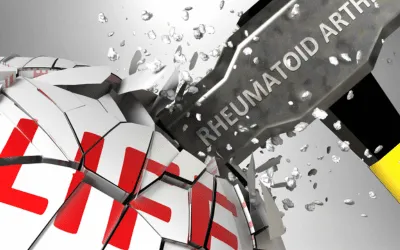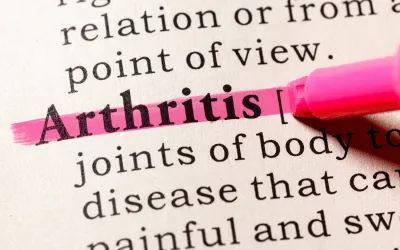About Arthritis
As the nation’s #1 cause of disability, arthritis affects nearly 60 million adults and 300,000 children. Over 100 types of arthritis and related conditions damage the joints and often other organs.
How can we assist you?
Helpful Tools for You

Discover 11 Key Insights on Psoriatic Arthritis
1. PsA: Understanding This Autoimmune Condition
Psoriatic arthritis is a condition where the body's immune system unintentionally targets its own healthy tissues, especially the joints and skin. This immune reaction leads to inflammation, resulting in symptoms like joint pain, stiffness, and swelling. It's important to note that without timely and effective treatment, this inflammation can impact the whole body and might result in lasting damage to the joints and tissues.
2. There are Periodic Fluctuations, Known as Flares
It's common for individuals to have varying experiences with their health conditions. Some may encounter regular episodes of heightened symptoms, known as flares, while others might have them less often. These symptoms can range from tender and swollen joints, stiffness, and swelling in the fingers or toes, to discomfort in tendons or ligaments. Some may also notice skin rashes, changes in their nails, fatigue, limited mobility, and even issues with their eyes. We're here to support and understand each unique experience.
3. Expertly Skilled in Camouflage.
Identifying psoriatic arthritis can be challenging as its signs often resemble those of other inflammatory arthritis conditions like rheumatoid arthritis (RA) and gout. It might even be mistaken for osteoarthritis (OA), which is a prevalent type of arthritis. To ensure an accurate diagnosis, your physician will perform a physical examination, gather a detailed medical history, and carry out necessary lab tests.
4. It Boasts Unique Characteristics
Individuals with PsA typically test negative for the rheumatoid factor (RF). If there's a positive RF blood test, the physician might initially consider rheumatoid arthritis. It's interesting to note that RA often results in joint pain that's symmetrical, meaning it's felt on both sides of the body, whereas PsA-related pain tends to be asymmetrical, experienced on just one side. Also, if you notice swelling that covers the entire length of a finger or toe, often referred to as 'dactylitis' or 'sausage digit', it's commonly associated with PsA.
5. Up to One-Third of Individuals with Psoriasis May Experience This Effect
Approximately 30% of individuals with psoriasis may also experience psoriatic arthritis. This indicates that most people with psoriasis don't develop PsA. Nonetheless, it's worth noting that those with psoriasis can still be susceptible to other types of arthritis, such as osteoarthritis or rheumatoid arthritis.
6. Universally Applicable, Regardless of Age or Gender
In the realm of autoimmune diseases, PsA stands out as one where both men and women have an equal likelihood of diagnosis. While it's common for symptoms to emerge between ages 30 and 55 among those with psoriasis, it's worth noting that some cases can be identified during childhood.
7. It could be linked to genetics.
Experts suggest that certain individuals might have a natural predisposition to conditions such as psoriatic arthritis. Research indicates that there's a more pronounced genetic or familial connection with this disease compared to other autoimmune rheumatic conditions. Interestingly, around 40% of those impacted have a close family member who also has psoriasis or psoriatic arthritis.
8. Rest assured, it's not transmissible.
Psoriasis isn't contagious. However, certain infections like strep throat might play a role in its onset. Besides infections, factors such as intense stress, injuries, or events that overly stimulate the immune system could trigger it, especially in those with a genetic predisposition.
9. It's not only about your joints
PsA can impact the joints and may bring about various symptoms such as fatigue, swelling of fingers and toes, and an inflammatory eye condition known as uveitis. It's also worth noting that there's a potential connection between PsA and conditions like heart disease, depression, and metabolic diseases. However, a PsA diagnosis doesn't necessarily translate to a lifetime of health challenges.
10. It's important to remember that not all illnesses are visible.
Psoriatic arthritis presents in various ways, with some signs like skin rashes being more evident. However, many of its symptoms, including joint pain and fatigue, can be less noticeable. It can be challenging when loved ones don't see visible signs, as they might not fully grasp the extent of the discomfort one is experiencing
11. We have effective treatments at your disposal.
Several over-the-counter (OTC) and prescribed solutions are available for psoriatic arthritis management. Some cater to both psoriasis and psoriatic arthritis symptoms, while others focus on skin concerns or joint challenges. Furthermore, many of these treatments can positively influence the progression of the disease by addressing the heightened immune response. Dive deeper to learn more about psoriatic arthritis.
Effects of Arthritis

Cause of Disability
In the United States, 23% of all adults, or more than 54 million people, have arthritis. It is a leading cause of work disability, with annual costs for medical care and lost earnings of $303.5 billion.

Workforce Effects
Sixty percent of US adults with arthritis are of working age (18 to 64 years). Arthritis can limit the type of work they are able to do or keep them from working at all.

Global Impact
In fact, 8 million working-age adults report that their ability to work is limited because of their arthritis. For example, they may have a hard time climbing stairs or walking from a parking deck to their workplace.
Promoting Interventions That Reduce Arthritis Pain
American Arthritis Foundation recognizes several proven approaches to reduce arthritis symptoms:
Be active. Physical activity—such as walking, bicycling, and swimming—decreases arthritis pain and improves function, mood, and quality of life. Adults with arthritis should move more and sit less throughout the day. Getting at least 150 minutes of moderate-intensity physical activity each week is recommended.
Protect your joints. People can help prevent osteoarthritis by avoiding activities that are more likely to cause joint injuries.
Talk with a doctor. Recommendations from health care providers can motivate people to be physically active and join a self-management education program. Should your arthritis be interfering with your activities of daily living you may be a candidate to receive many new treatments, and learn how to reverse the arthritis condition.
Have a question?
We're Here to Help
By providing my phone number, I agree to receive text messages from the business.


